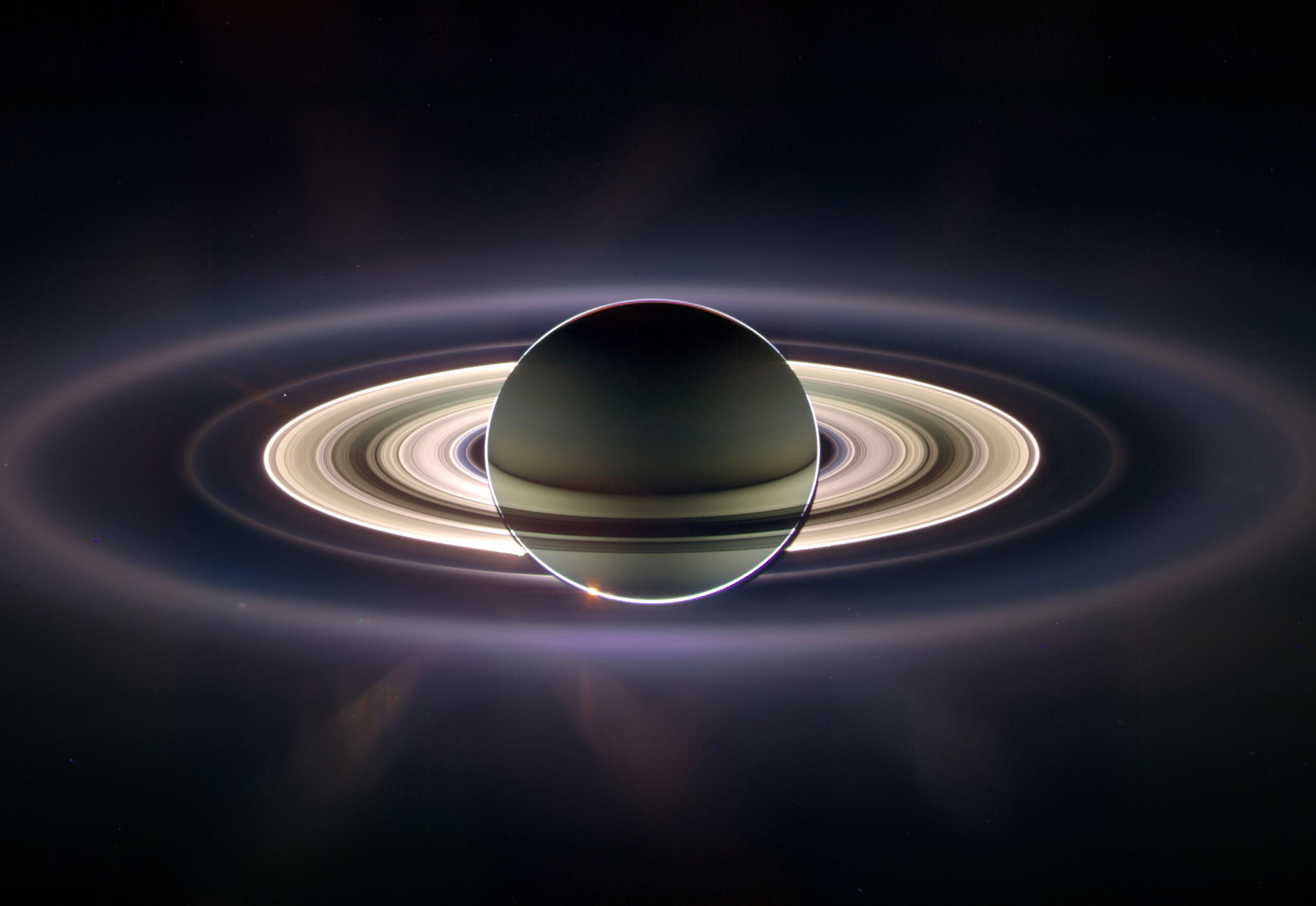Imagine All the People: When Cassini Looked Back at Earth
Whatever disagreements may plague humanity, the international Cassini-Huygens mission has proved that we are capable of great collaboration. On July 19, 2013, during an orbit into the shadows behind Saturn — where the planet's rings were backlit by the sun — the Cassini probe's narrow-angle camera was able to find its origin point: the speck in the sky named Earth. And, knowing Cassini was looking, some much smaller specks, human Earthlings, "waved hello" to the spacecraft and, therefore, to one another.
Earlier in the mission, on Sept. 15, 2006, Cassini had taken frames to compile a backlit image of Saturn and its rings, which revealed Earth through the tenuous F ring.
This highly successful image set the Cassini imaging team leader, Carolyn Porco, on a path to repeat the experience with the intent to involve the public. This would also become Cassini's first attempt to capture Earth and the moon in their natural colors at the highest resolution possible with the camera system. [Wave at Saturn: Images from NASA's Cosmic Photobomb by Cassini Probe]
Wave at Saturn
In the weeks prior to the July 2013 event, NASA put out a call for all to "wave at Saturn." No space agency had ever announced and widely publicized the date and time when an image of Earth would be taken by a spacecraft.
Sending Cassini's cameras into the shadows behind Saturn was not simply a publicity stunt. Such orbits offer the best vantage point of certain large-scale features of the rings and the relationships of Saturn's many moons. These details can be revealed only when the body of Saturn itself shields Cassini's cameras from direct sunlight — in essence, creating an eclipse.
The structure of Saturn's rings — in particular, the E ring — is revealed by sunlight passing through them. The E ring of dust and ice is created and shaped by material rushing out into space from fissures near the southern pole of the small moon Enceladus. The large amount of water-ice content causes this ring to appear bluish in natural-color images. Defining the spread and mass of this ring — and learning the rate and frequency at which Enceladus' geysers flow — lets researchers calculate how long the moon has been active in this way. That, in turn, helps calibrate the range of conditions within the moon's subsurface ocean, which may be capable of supporting life.
While the Saturn system posed for this picture, enthusiasts on Earth did the same: More than 1,400 images from 40 nations were posted and collected via social media platforms, including Facebook, Flickr, Twitter, Instagram and Google+. Some were sent directly to the mission team by email.
Breaking space news, the latest updates on rocket launches, skywatching events and more!
Everyone you know is in this picture. The Cassini-Huygens mission — a joint effort of NASA, the European Space Agency and the Italian Space Agency — represents the whole of humanity seeking to understand its cosmic beginnings. Our species' deep inquisitiveness has let us survive and prosper. Since the invention of the scientific method four centuries ago, the human population has proliferated rapidly, and our well-being has improved dramatically.
You could make the argument that only a very healthy civilization would choose to spend more than $3 billion to send sensors more than 1 billion kilometers out into the blackness of space, to pry open the secrets of how the universe makes life. It's a tribute to our curiosity and restless innovation to imagine we can find clues to our origins on our sister planets. That bet paid off wildly with Cassini's discovery of an ocean of liquid water on Enceladus, among other remarkable findings in the realm of that richly ringed planet.
For a deeper look into all that Cassini has found in its 13 years in the Saturn system, watch the 73-minute documentary "Kingdom of Saturn – Cassini's Epic Quest," available at Amazon Xive-TV.
The author, @DavidSkyBrody, is the writer and director of "Kingdom of Saturn –Cassini's Epic Quest," a documentary look back at the mission available at Amazon Xive-TV. Brody was formerly executive producer at Purch, the parent company of Space.com and LiveScience.com.
Follow Dave Brody @DavidSkyBrody. Follow us @Spacedotcom, Facebook and Google+. Originally published on Space.com.

Dave Brody has been a writer and Executive Producer at SPACE.com since January 2000. He created and hosted space science video for Starry Night astronomy software, Orion Telescopes and SPACE.com TV. A career space documentarian and journalist, Brody was the Supervising Producer of the long running Inside Space news magazine television program on SYFY. Follow Dave on Twitter @DavidSkyBrody.



